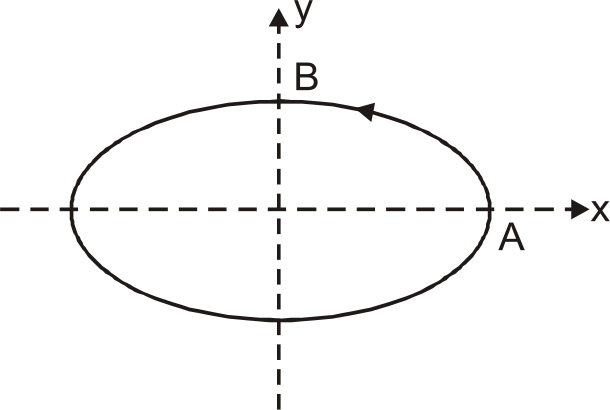A particle moves with a costant speed u along the curve y = sin x. The magnitude of its acceleration at the point corresponding to x=π/2 is
u2
Topper's Solved these Questions
- KINEMATICSBOOK - MOTIONCHAPTER - KINEMATICSEXERCISE - EXERCISE 4 PREVIOUS YEAR (LEVEL 1)
22 Videos
- KINEMATICSBOOK - MOTIONCHAPTER - KINEMATICSEXERCISE - EXERCISE 4 PREVIOUS YEAR (LEVEL 2)
6 Videos
- KINEMATICSBOOK - MOTIONCHAPTER - KINEMATICSEXERCISE - EXERCISE 3 SUBJECTIVE PROBLEMS (Level-1)
20 Videos
- HYDROSTATIC, FLUID MECHANICS & VISCOSITYBOOK - MOTIONCHAPTER - HYDROSTATIC, FLUID MECHANICS & VISCOSITYEXERCISE - EXERCISE -3 (SECTION-B) PREVIOUS YEAR PROBLEM
7 Videos
- KINETIC THEORY OF GASES BOOK - MOTIONCHAPTER - KINETIC THEORY OF GASES EXERCISE - EXERCISE-3 SECTION-B
16 Videos
Similar Questions
A particle is moving in the xy plane on a sinusoidal course determined by y = A sin kx, where k and A are constants. The X component of the velocity of the particle is constant and is equal to v0 and the particle was at origin at time t=0. Find the magnitude of the acceleration of the particle when it is at point having x co ordinate x=π2k.
View SolutionAt t=0, the particle is at the origin and its velocity is 10m/s at an angle 37∘ with the x-axis. The particle moves in x−y plane with a constant acceleration of 1m/s2 along the y-axis. Find the magnitude and direction of the velocity after 2s.
View Solution
Knowledge Check
A body moves with a constant speed along a curved path its acceleration :
Ais zeroBis parallel to its velocityCcan make any arbitrary angle with its velocityDis perpendicular to its velocityIF a body moves with constant speed along a curved path,its tangential acceleration is
AzeroBis parallel to its velocityCperpendicular to its velocityDcan make any arbitrary angle with its velocityA particle is moving with constant speed v along the line y = a in positive x -direction. Find magnitude of its angular velocity about orgine when its position makes an angle θ with x-axis.
Avsin2θaBvcos2θaCvsinθDNone
A particle is moving in a straight line its speed depends on x as shown. The acceleration of particle is...

View SolutionA particle is moving along an elliptical path with a constant speed. As it moves from A to B, magnitude of its acceleration:

View SolutionA particle is moving along an elliptical path with constant speed. As it moves from A to B, magnitude of its acceleration :

View SolutionIf the path of a moving point is the curve x=at,y=sin at, then its acceleration at any instant
View SolutionA particle moves along the curve y2=2x where x=t22 & y>0. What is the acceleration of the particle at t=2s ?
View Solution
